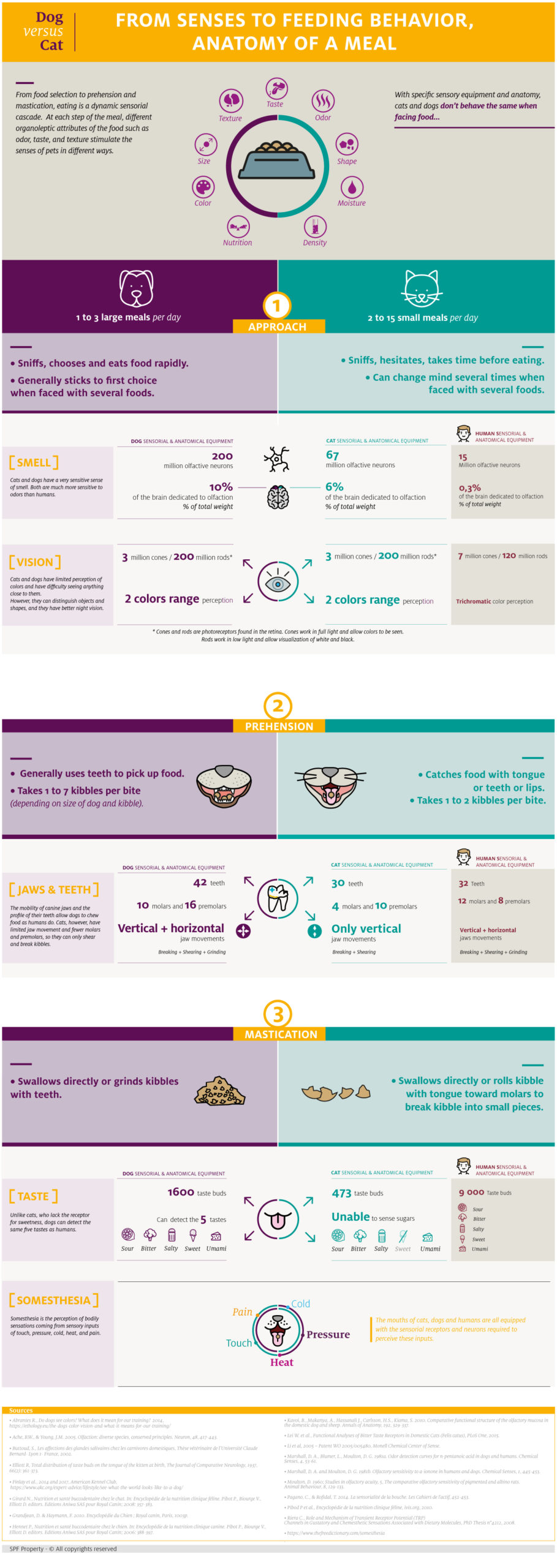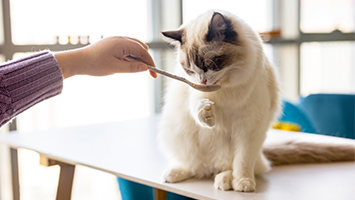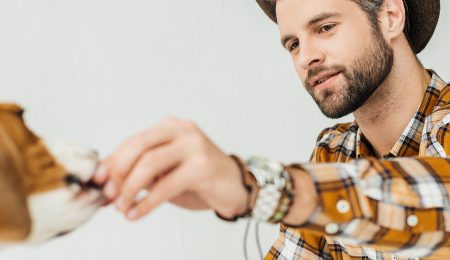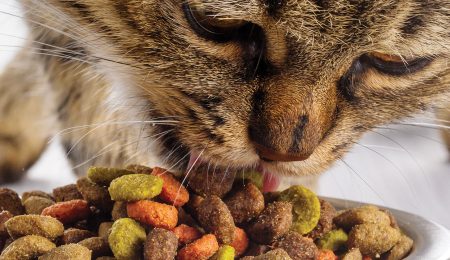Like humans, cats and dogs have their own feeding behaviors. On close observation, it’s easy to see that their way of eating is not the same. And this difference starts right from the food selection step.
From food selection to mastication, a cat is not a dog
If dogs sniff, choose and eat food rapidly, generally sticking to their first choice, cats tend to hesitate, take time before eating, and change their mind several times when facing various foods.
Food prehension and mastication is also different between cats and dogs, especially with dry pet food.
Dogs usually pick up kibbles with their teeth and swallow them directly or after having ground them.
Cats can take kibbles with their tongue, teeth or lips. They either swallow directly or roll them with their tongue toward their molars to break them in small pieces.
To understand these behavioral differences you need to dig into anatomical and sensorial fields.
Cat and dog feeding behavior: a history of senses
Feeding behavior mostly results from the interaction between organoleptic properties of food and pet sensorial equipment.
Odor, color, texture, shape, taste… at each step of the meal, different food attributes stimulate different pets’ organs and senses.
And here is the variation! From number of taste buds to number of teeth, cats and dogs are not the same. Their differences in sensory acuity and anatomy cause them to behave differently with food.
With 10 percent of their brain dedicated to olfaction, dogs have, for instance, a strong sense of smell. It is thus not surprising that they sniff a lot and trust their nose to select food.
One of the ways cats differ from dogs is that their jaws are limited to vertical movement. That’s probably why they do not grind but shear and break kibbles.
A first step toward palatability
Knowing physiology and understanding feeding behavior is a first step to tailoring food to the specific needs of cats and dogs.
The logical continuation to satisfy their appetites is to know their preferences and make sure that food possesses all the attributes that will bring palatability.
But that is another story! To be continued…
![[INFOGRAPHIC] Dog vs Cat: from senses to feeding behavior, anatomy of a meal](https://www.appetizerblog.com/wp-content/uploads/2019/04/DPF_BLOG_CAT_AND_DOG_HEADER_1920X720-1250x545.jpg)





* required fields